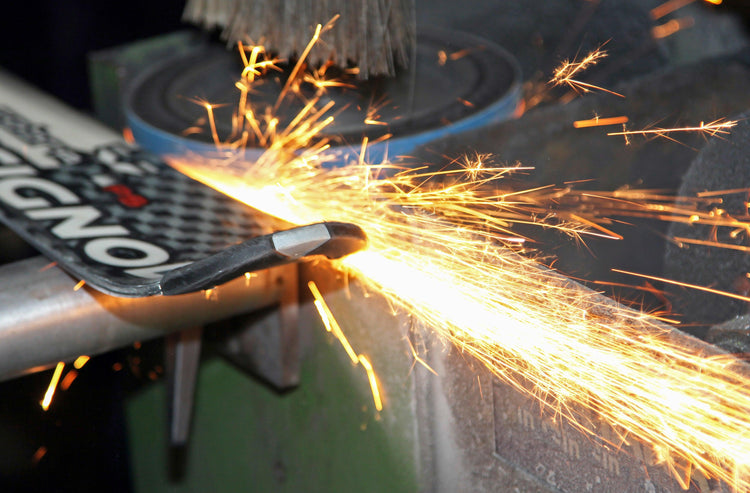Our belt grinder ES 2000 is of course not the only electric edge grinder on the ski tuning market. There are also some other machines that are sold for this purpose. We once looked at the type of disc sanders and compared the results when sanding the side edge.
Disc sanders
Disc sanders grind using a grinding wheel radial to the edge. This means that they grind the edge with circular movements, whereby the grinding wheel moves out to the edge and back in again. We took a closer look at the grinding result under the microscope. Here is a photo of it:
Due to the circular movements, a slight burr is created at the edge of the ski or snowboard, which can be seen in this picture.
In order to remove this burr, a diamond file should be used after processing with the disc grinder. In addition, you should make sure that the machine is always in motion, otherwise it can happen that you grind an unevenness in the edge.
We also measured the surface value as the average roughness depth. With the average roughness depth, we divided the surface of the edge into five areas and calculated the heights and depths. From this we determined the mean value, which is a value of 2.7 μm.
Belt Sander
For comparison, we have also taken a closer look at our belt sander ES 2000.
The difference in the sanding process is that the edges are sanded using a sanding belt. This process takes place in parallel, i.e. the belt moves along the edge. This movement also means that no unevenness is ground into the edge if you stay a little longer on one point of the edge. Here, too, we have placed the ski under the microscope.

The grinding result, which can be seen here, shows no burr formation. Nothing needs to be refined afterwards during this grinding process.
Here, too, we measured the surface value as the average roughness depth. The result with the belt grinder is 0.5 μm.
Conclusion:
Both the roughness depth and the burr formation are lower when the belt grinder is used in our measurements. Although the ES 2000 is heavier, it is forgiving of application errors, which makes operation easier.
Note:
Both units have been used with standard abrasive belts/discs, so no advantage is gained from finer grit sizes. Also, the results were not changed afterwards. Only the brightness of the images has been adjusted.
